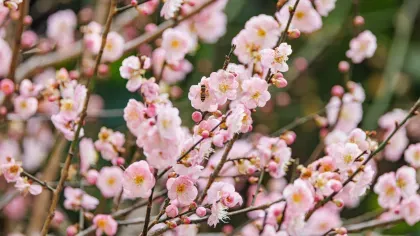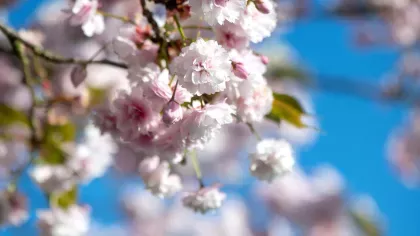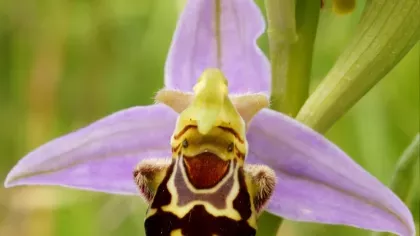15 July 2019
The great British meadow
A third of British flora is found in meadows and grasslands, but that is drastically under threat.

Close your eyes and picture the British countryside; what do you see?
A patchwork of green fields and hedgerows, the sight and scent of wildflowers, the buzz and flutter of insects around you and the calls of birds overhead probably comes to mind.
This vision might well include a meadow – a semi-natural grassland which is managed for hay.
This quintessential landscape has drastically reduced over the last 70 years and it is estimated that only 2-3% of the hay meadows present in the 1930s remains today.
Considering almost a third of British flora is found in meadow and grassland habitat, including many of our rarest and most threatened species, that is a worrying thought.

Meadows are home
The link between meadows and land management practices means that the balance of species has evolved with farming practices over the last 6,000 years.
Regional variation in farming and environment has created some unique meadow habitats across the UK. For example, Hebridean crofts are critical to the development of the spectacular Machair wildflowers.
Traditional management of meadows makes for a rich habitat. They are among the most biodiverse habitats in the UK. Wet rush meadow in the South West of England and South Wales is home to some of the most diverse insect communities.

A year in a meadow
Over the course of a year the benefits of a meadow to wildlife are even greater.
Plants left to go to seed are a great food source for birds such as linnets and twites.
A longer sward gives cover to ground-nesting birds such as skylarks and corncrake. The cycle of growth and grazing gives smaller, less vigorous plants the space to grow and set seed, giving rise to increased plant diversity.
This diversity of plants will, in turn, provide food and shelter for a range of insects, which will then feed a variety of insectivorous birds, bats and mammals.
At the end of this process, hay can be harvested to sustain animals in the colder months. In some cases, winter grazing of the regrowth to disturb the ground creates opportunities for seed to germinate.
A recent study in Norway found that their alpine meadows store more carbon than heath or shrubland.
It may also help to prevent flooding through increased water retention and, according to research carried out in 2011, reduce pollution through increased nitrate retention.

Meadows under threat
In recent decades, dramatic changes in countryside management have disrupted this cycle.
Increased fertiliser use can disturb the balance of plant species found in a meadow and earlier hay harvests mean no seed production or no cover for birds.
At some sites, removing grazers can allow natural regeneration of scrub, out-competing and shading the grassland species.
This is bad news for some of the threatened plants which make up these meadows but also for the invertebrates, birds, and mammals which depend on them.

Kew supports meadows
We are working to support meadow and grassland restoration.
The UK Native Seed Hub, based at the Millennium Seed Bank (MSB), provides seed, plants, expertise and training to land managers to support the conservation of species and habitats including meadows.
With 98% of the UK’s bankable flora now conserved in the MSB, we are in a unique position to provide seed, plants and bespoke seed mixes of known origin and quality, which can be supplemented with hand or brush harvesting. Our sub-zero seed storage, research and horticultural facilities mean that harvests can be assessed, stored and grown on site.
The Coronation Meadow at Wakehurst is part of a nationwide initiative to celebrate outstanding meadows and create new ones. It's a fantastic research site to increase our understanding of seed harvest and germination.
With our facilities and our partners, we are using our skills, knowledge and resources to protect British meadows and ensure our countryside remains more than just a memory.
If you would like to know more about the UK Native Seed Hub or other work being done in the UK, you can follow us on twitter: @Kew_MSBUK.




